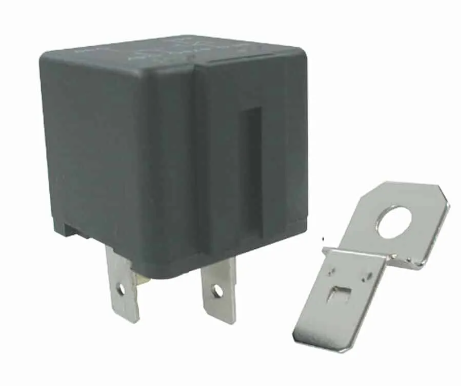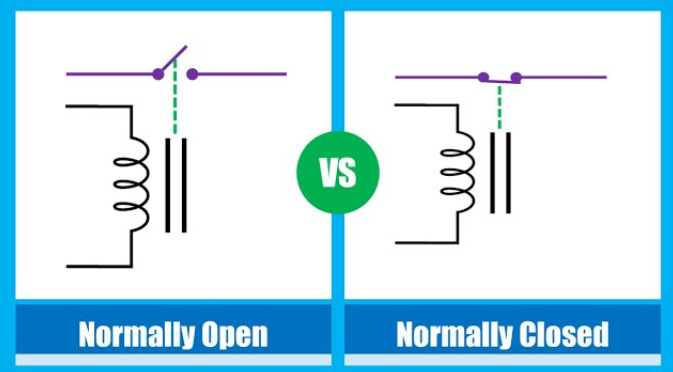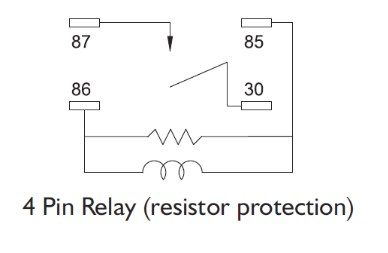OUTLINE:
Why Do You Need Normally Open Relay? 5 Reasons
 397
397In our modern lives, electrical systems surround us, from our homes to our workplaces. Have you ever wondered about the who that enable efficient power control and ensure our safety? In this article, we look for the reasons why normally open relay is vital in our everyday lives, unlocking a world of convenience, reliability, and peace of mind.

What Is a Normally Open Relay
A normally open relay is a type of relay that remains in an open state (no circuit connection) by default, by using the magnetic force of an electromagnet to control the switching state of the contacts. When no energizing signal is provided, the relay's internal contacts remain separated, preventing current passage via the regulated circuit. When the coil is activated, the NO contact closes.
This type of relay is widely used in various electrical and control systems due to its unique characteristics and benefits.
5 Reasons for Why We Need Normally Open Relay
Power Control: One of the primary reasons for employing normally open relays is to efficiently regulate electrical loads. These relays allow you to activate or deactivate devices or systems as needed by controlling the flow of current, optimizing power usage, and preventing overloads.
Enhanced Safety Measures: Normally open relays help to ensure safety by preventing unintentional circuit closures. They add an extra layer of protection by keeping the circuit open until purposely closed, lowering the chance of electrical mishaps or equipment damage.
Compatibility with Switching Devices: Normally open relays work well with a variety of switching devices, including sensors, timers, and control modules. They function as a link between the control circuit and the load, providing for smooth communication.
Flexibility in Control Systems: Normally open relays are versatile in control systems, allowing for a variety of applications. They can be used in automation processes, motor control, lighting systems, HVAC (Heating, Ventilation, and Air Conditioning) systems, and a wide range of other applications that require precise control and reliable switching.
Fault Detection: In fault detection systems, normally open relays are frequently used. These relays detect anomalies or interruptions in current flow by monitoring the continuity of a circuit. When a malfunction is identified, the normally open relay can take precautionary measures like as sounding an alarm or shutting down the circuit to prevent additional harm.
Normally Open VS Normally Closed Relay Biggest Differences
It is essential to understand the differences between Normally Closed (NC) and Normally Open (NO) relays.
While normally open relays keep the circuit open by default and close when activated, normally closed relays operate in the opposite manner.
Normally closed relays keep the circuit closed in their default state and open when activated.
These differences in default states and switching behavior make them suitable for distinct applications and system requirements.

Normally Open Relay Examples and Normally Closed Relay Examples
NO Relay Example
A car starter button uses a NO relay. When you press the button, it energizes the relay, closing the circuit and sending power to the starter motor, cranking the engine. When you release the button, the relay de-energizes, opening the circuit and stopping the starter motor.

NC Relay Example
A refrigerator door light uses an NC relay. When the door is closed, the NC relay is closed, completing the circuit and lighting the bulb. When you open the door, the NC relay opens, breaking the circuit and turning off the light.

FAQ
Does normally open have continuity?
No, a normally open (NO) relay doesn't have continuity when it's in its normal state. This means that when the coil of the relay is not energized, the circuit between the normally open (NO) contacts is broken, and there is no path for current to flow.
How to distinguish NO and NC relay?
Check symbols, shape, and position of contacts.
Use a multimeter or test light to verify operation.
Sample Wiring Diagrams for a 4 Pin Normally Open Relay

Summary
In summary, normally open relays are critical components of modern electrical and control systems. They improve safety, provide efficient power regulation, are compatible with switching devices, have greater control system flexibility, and can identify faults. By leveraging the benefits of normally open relays, we can assure the dependable and efficient operation of electrical and control systems across a variety of sectors.

Disclaimer: The views and opinions expressed by individual authors or forum participants on this website do not represent the views and opinions of Chipsmall, nor do they represent Chipsmall's official policy.

share this blog to:

